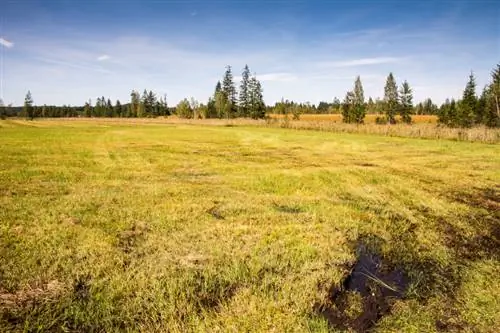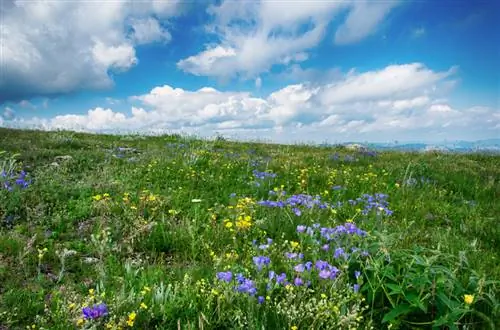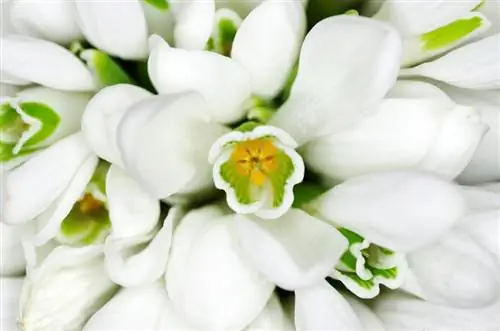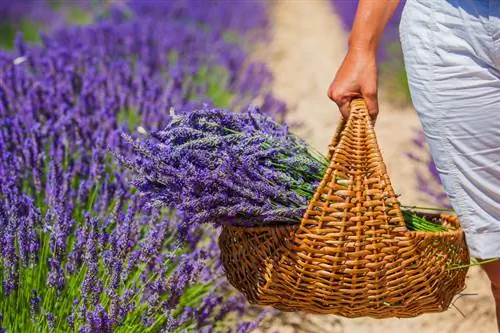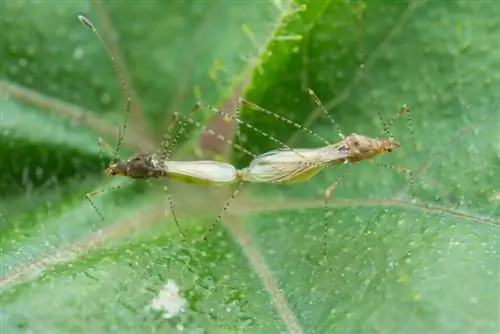- Author admin [email protected].
- Public 2023-12-16 16:46.
- Last modified 2025-01-23 11:20.
Frogs and other amphibians, birds and butterflies (e.g. the very rare marsh fritillary) are native to the swamp meadows, which are mostly found in the lowland areas of rivers. But be careful when observing nature in any way, because these very wet meadows can suddenly turn into a moor and can therefore be dangerous during a hike.
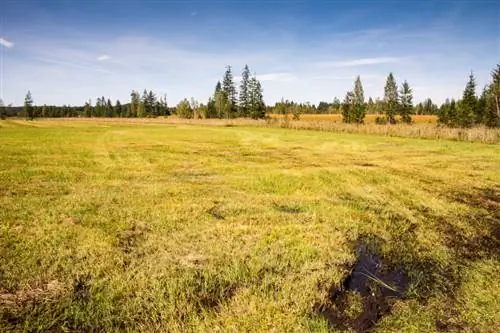
What is a swamp meadow and what plants grow there?
A swamp meadow is a particularly wet wet meadow covered with tall grasses and sedges, which often occurs in river basins and has to withstand both floods and dry periods. Typical plants are swamp iris, cuckoo carnation or marsh marigold.
What is a swamp meadow?
The swamp meadow, also known as wet meadow, is one of the wet meadows. It is a particularly wet meadow that is mainly covered with tall grasses and sedges (sour grasses). Swampy meadows can be flooded, especially in the winter months and spring, but often dry out in summer. The typical flora and fauna in these meadows must be sufficiently tolerant of the extremes mentioned in order to survive in this habitat.
Typical swamp meadow plants
The typical flowers found in swamp meadows usually bloom in the months between May and July. Depending on the regional location, plants such as
- Swamp iris (Iris pseudacorus)
- Cuckoo Campion (Lychnis flos-cuculi)
- Broad-leaved Orchid (Dactylorhiza majalis)
- Checkerboard flower (Fritillaria meleagris)
- fever clover (Menyanthes trifoliata)
- Swamp marigold (C altha palustris)
- Swamp Orchid (Orchis palustris)
- or butterbur (Petasites hybridus)
to be found. As in all wet meadows, the butterflies, mint plants and grasses are particularly well represented.
Create and maintain swamp meadows
Naturally, swamp meadows must be created in a location that is as moist as possible, but it is difficult to create this artificially. A location in the lowlands of a river or stream is therefore ideal, and the soil should also be loamy or clayey - such heavy soil prevents the water from simply seeping in and thus drying out the soil. For the same reason, it makes sense to create a wet meadow in a depression, as the water can collect better here. These swamp meadows should be mowed once a year - usually in autumn - so that the vegetation does not become overgrown and eventually turn into a riparian forest.
Tips & Tricks
You can also recreate a swampy meadow in your home garden on a small scale. To do this, you first need a water source - even an artificial one - that provides sufficient moisture and a loamy or clayey soil. A natural or artificial stream or a garden pond is suitable for this purpose.

